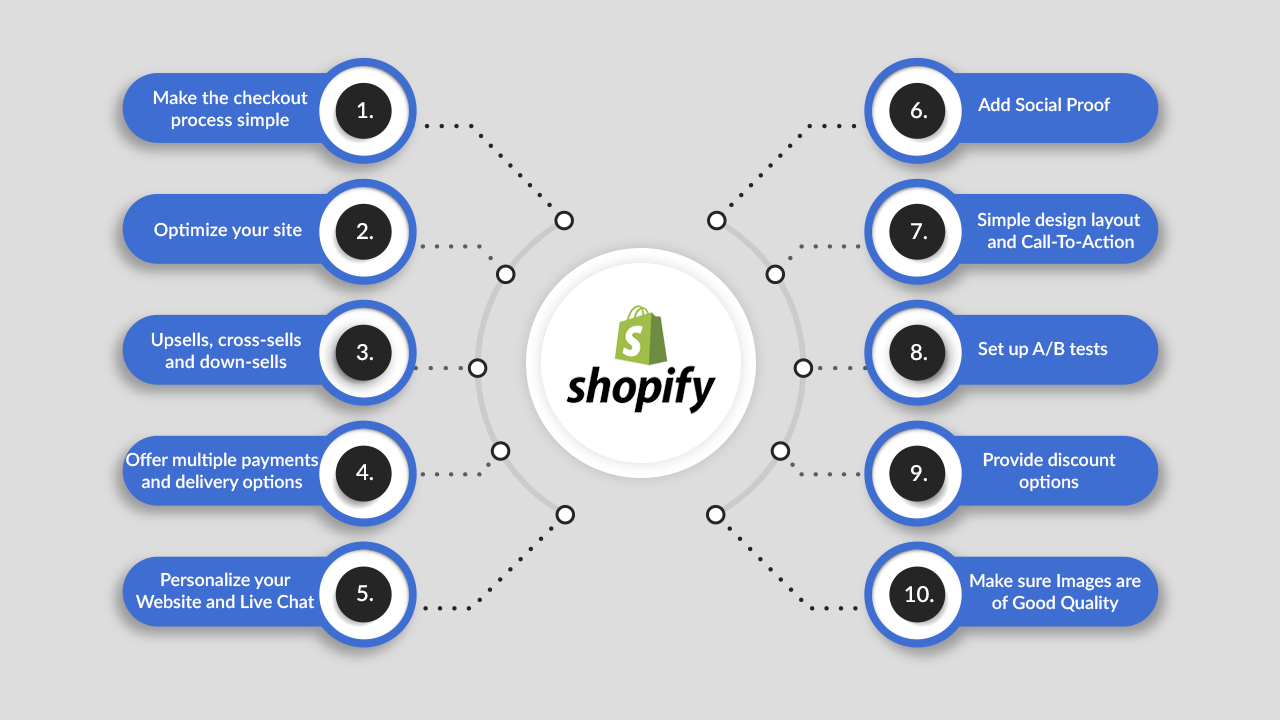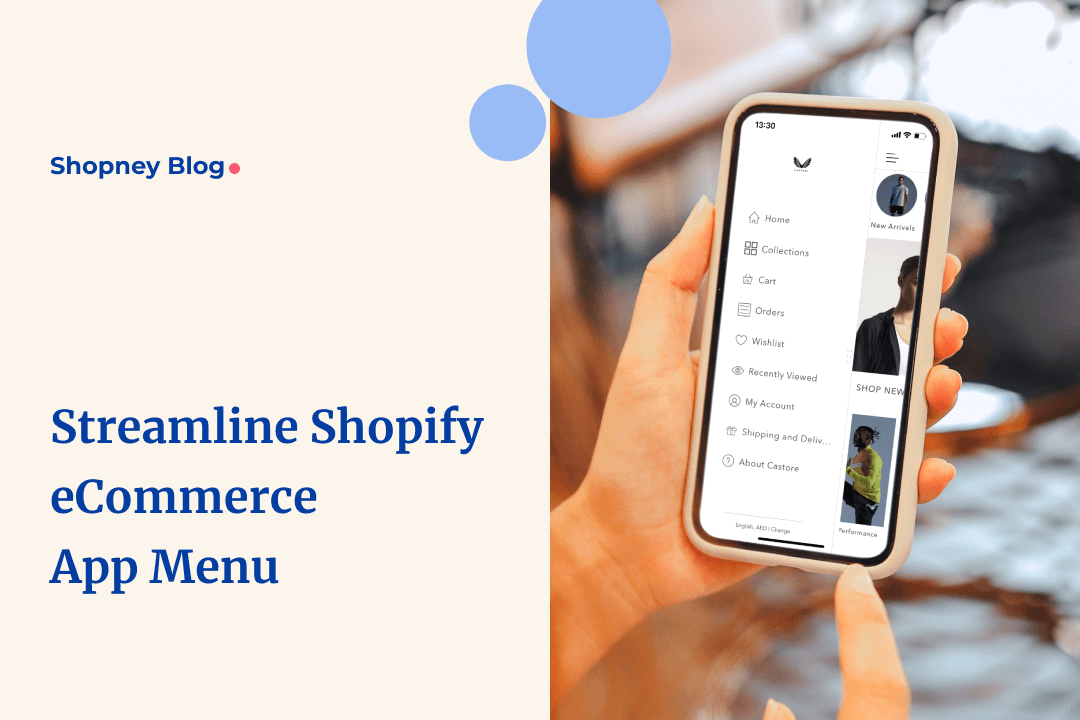To optimize your Shopify store design for conversions, focus on clean layouts and intuitive navigation. Ensure fast loading times and mobile responsiveness.
In today’s competitive e-commerce landscape, a well-designed Shopify store can significantly boost your conversion rates. The design of your online store plays a crucial role in attracting and retaining customers. A clean, intuitive layout helps visitors find what they need quickly, enhancing their shopping experience.
Mobile responsiveness ensures that your store looks and functions well on all devices, capturing a broader audience. Fast loading times reduce bounce rates and keep potential buyers engaged. By prioritizing these elements, you create a user-friendly environment that encourages purchases and fosters customer loyalty.
Homepage Essentials
The homepage of your Shopify store is crucial for conversions. An optimized homepage can grab attention and guide users to take action. Let’s explore the Homepage Essentials that will help boost your conversions.
First Impressions
First impressions matter. Your homepage should load quickly and look professional. Use high-quality images and a clean design. The first thing visitors see should be your unique selling proposition (USP).
- Make your USP clear and concise.
- Include a strong call-to-action (CTA).
- Display customer reviews or testimonials.
A good first impression can reduce bounce rates and increase engagement.
Navigation Design
Good navigation helps users find what they need. Use a simple and intuitive menu structure. Place the menu at the top of the page.
| Best Practices | Details |
|---|---|
| Limit Menu Items | Keep it to 5-7 items. |
| Include a Search Bar | Place it prominently. |
| Use Descriptive Labels | Make labels clear and specific. |
Effective navigation can improve user experience and drive conversions.

Effective Product Pages
Creating effective product pages is crucial for any Shopify store aiming for higher conversions. A well-designed product page can significantly boost your sales. It should be visually appealing and provide all necessary information. Below are essential tips to optimize your product pages for conversions.
High-quality Images
High-quality images are vital for showcasing your products. Clear and detailed images help customers make informed decisions. Use professional photography to highlight product features.
Consider using multiple images for each product. Show different angles and close-ups. This gives customers a better understanding of what they are buying.
- Use high-resolution images
- Provide zoom-in options
- Show the product in use
Detailed Descriptions
Detailed descriptions are essential for informing customers. Clearly describe the product’s features and benefits. Include information about materials, sizes, and colors.
Use bullet points to highlight key features. This makes it easier for customers to scan the information. Well-written descriptions can significantly increase conversions.
- Include product dimensions
- Mention material and care instructions
- Highlight unique features
| Feature | Detail |
|---|---|
| Material | 100% Cotton |
| Size | S, M, L, XL |
| Colors | Red, Blue, Green |
Checkout Optimization
Optimizing your Shopify store’s checkout process is crucial for increasing conversions. A smooth checkout experience encourages customers to complete their purchases. Let’s explore some effective strategies for checkout optimization.
Streamlined Process
A streamlined checkout process reduces friction. Simplify the steps to make it easy for customers. Use a single-page checkout to keep things quick and straightforward.
Remove unnecessary fields. Only ask for essential information. Use auto-fill features to save customers’ time. Offer multiple payment options for convenience.
Guest Checkout
Guest checkout allows customers to buy without creating an account. This option appeals to first-time buyers. It saves them time and effort.
Encourage account creation after the purchase. Offer benefits like order tracking for registered users. But don’t force it during checkout.
- Minimize form fields
- Enable auto-fill
- Provide multiple payment options
- Offer guest checkout
| Feature | Benefit |
|---|---|
| Single-page checkout | Reduces steps |
| Auto-fill | Saves time |
| Guest checkout | Encourages purchases |
| Multiple payment options | Increases convenience |
Mobile-friendly Design
Optimizing your Shopify store design for mobile devices is crucial. Most people shop using their smartphones. A mobile-friendly design ensures a seamless shopping experience. This helps increase conversions and customer satisfaction. Focus on creating a responsive layout and touch-friendly elements.
Responsive Layout
A responsive layout adapts to different screen sizes. It makes your website look good on all devices. Use flexible grids and layouts. Ensure images and text resize smoothly. This keeps your store user-friendly on any device.
To achieve a responsive layout, use CSS media queries. These help adjust styles based on screen size. Here’s a basic example:
@media (max-width: 600px) {
.container {
width: 100%;
}
}
Touch-friendly Elements
Make your site easy to navigate on touchscreens. Use large buttons and spacious touch areas. This prevents accidental clicks and improves user experience. Ensure links and buttons have enough padding.
Consider these touch-friendly tips:
- Use a minimum button size of 44×44 pixels.
- Space out clickable elements.
- Avoid using small text for links.
Here’s an example of touch-friendly button styling:
.button {
padding: 15px 20px;
font-size: 16px;
border-radius: 5px;
}
These steps make your Shopify store mobile-friendly. Customers will find it easier to browse and shop. This leads to higher conversions and better sales.
Utilize Analytics
Optimizing your Shopify store for conversions is critical for success. Utilizing analytics can provide insights into how customers interact with your store. This information helps you make informed decisions to improve your store’s design and increase conversions.
Tracking User Behavior
Tracking user behavior lets you see how visitors interact with your site. Use tools like Google Analytics to gather data. You can track page views, bounce rates, and session durations. This helps you understand which pages perform well and which need improvement.
Consider implementing heatmaps to visualize user behavior. Heatmaps show where users click, scroll, and hover. This provides a clear picture of what catches their attention. With this data, you can optimize your layout to highlight key elements.
A/b Testing
A/B testing involves comparing two versions of a web page to see which performs better. Create different versions of a page with small changes. For example, test different headlines, images, or call-to-action buttons.
Use tools like Optimizely or Google Optimize to run these tests. Analyze the results to see which version drives more conversions. Implement the winning version on your site.
Here is a simple example of A/B testing:
| Version | Element | Conversion Rate |
|---|---|---|
| A | Red Button | 5% |
| B | Green Button | 8% |
In this case, the green button version has a higher conversion rate. You should choose the green button for your store’s design.
By utilizing analytics and performing A/B testing, you can make data-driven decisions. This will optimize your Shopify store design for better conversions.

Boost Loading Speed
Boosting your Shopify store’s loading speed is crucial for conversions. A fast-loading site keeps visitors engaged and reduces bounce rates. Let’s explore two key strategies to enhance loading speed.
Image Compression
Images are often the largest files on a web page. Compressing images can significantly reduce load times. Use tools like TinyPNG or ImageOptim to compress images without losing quality.
- Choose the right file format: JPEG for photos, PNG for graphics.
- Resize images to the exact dimensions needed.
- Use lazy loading to delay offscreen images.
Here is a simple code example for lazy loading images:

Efficient Coding
Optimized code is vital for fast loading times. Minify CSS, JavaScript, and HTML files. Remove unnecessary comments and whitespace.
Consider using a Content Delivery Network (CDN) to deliver content faster. A CDN stores copies of your site on multiple servers worldwide.
| Optimization | Tool |
|---|---|
| Minify CSS | CSSNano |
| Minify JavaScript | UglifyJS |
| Minify HTML | HTMLMinifier |
Use the following code to add a CDN in your Shopify theme:
By implementing these strategies, you can significantly improve your Shopify store’s loading speed. Fast loading times lead to better user experiences and higher conversion rates.
Leverage Social Proof
Optimizing your Shopify store design for conversions involves using social proof. Social proof helps build trust with potential customers. This can significantly boost your conversion rates. You can leverage social proof in various ways. Two effective methods are customer reviews and trust badges.
Customer Reviews
Customer reviews are powerful. They show real experiences from real customers. This can influence new visitors to make a purchase.
- Encourage customers to leave reviews.
- Display reviews prominently on product pages.
- Use star ratings for quick visual impact.
- Respond to reviews to show you care.
Trust Badges
Trust badges are small icons or symbols. They reassure visitors that your store is secure and reliable.
| Type of Trust Badge | Purpose |
|---|---|
| Security Badges | Show your site is safe for transactions. |
| Payment Badges | Indicate accepted payment methods. |
| Money-Back Guarantee | Offer a refund if the product is unsatisfactory. |
| Free Shipping | Inform customers about free shipping offers. |
Place trust badges near the “Add to Cart” button. This boosts confidence when making a purchase.

Personalization Strategies
Personalization strategies can significantly boost your Shopify store’s conversions. Tailoring the shopping experience to each visitor enhances engagement and increases sales. Let’s explore some effective personalization techniques.
Custom Recommendations
Offering custom recommendations can lead to higher sales. Use customer data to suggest products that match their interests.
- Analyze browsing history to suggest similar items.
- Recommend products based on past purchases.
- Use customer demographics for targeted suggestions.
Dynamic Content
Dynamic content keeps your store fresh and relevant. Change content based on visitor behavior and preferences.
| Strategy | Benefits |
|---|---|
| Personalized Banners | Catch attention with relevant offers. |
| Customized Email Campaigns | Increase open and click-through rates. |
| Location-Based Content | Show products popular in the visitor’s area. |
Use these strategies to make your Shopify store more engaging and conversion-focused. Personalization can turn casual browsers into loyal customers.
Frequently Asked Questions
How Can I Improve My Shopify Store Design?
To improve your Shopify store design, focus on user experience. Simplify navigation, use high-quality images, and ensure fast load times. Optimize for mobile devices and create a clear call-to-action.
What Are The Best Practices For Shopify Homepage Design?
Best practices for Shopify homepage design include a clean layout, engaging visuals, and clear calls-to-action. Highlight popular products and ensure easy navigation. Use customer reviews for credibility.
How Do I Make My Shopify Store Mobile-friendly?
To make your Shopify store mobile-friendly, use a responsive theme. Optimize images and simplify navigation. Ensure text is readable and buttons are easy to click.
Why Is Page Load Speed Important For Conversions?
Page load speed is crucial for conversions. Slow-loading pages frustrate users, causing them to leave. Fast load times improve user experience and increase the likelihood of conversions.
Conclusion
Optimizing your Shopify store design boosts conversions and enhances user experience. Focus on simplicity, mobile responsiveness, and clear calls-to-action. Regularly test and refine your design elements. By implementing these strategies, you can significantly improve your store’s performance and drive more sales.
Start optimizing today to see better results.

